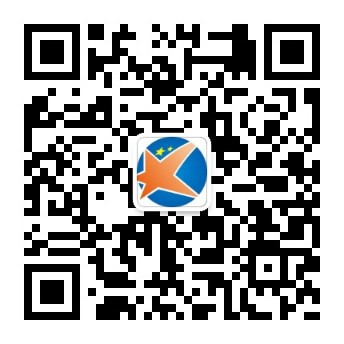初中名师视频课程免费试听1200分钟 |
||||
| 初一全科强化班辅导课程 免费听课 | 初二强化班辅导课程 免费听课 | 初三强化班辅导课程 免费听课 | ||
Unit 3 How do you get to school?
Section A
单元语法1:交通方式的英语表达
英语中的交通方式的表达法主要有两种:介词表达法和动词表达法。
(1)动词表达法
①“动词+ 限定词+ 表示交通工具的名词”
take a/the/ sb.’s bus/ car/ taxi/ train/ plane/ subway/ ship/ boat
drive a/the/sb.’s bus/ car/ taxi/ to sp. 乘/驾驶...去某地
特殊:骑自行车用ride,不同take
ride a/the/sb.’s bike to sp. = go to sp. by bike(骑自行车去某地)
Eg: He often takes a train to Shanghai. 他经常坐火车去上海。
Linda usually rides a bike to school.
②“动词+ to+ 地点名词” = get/go to sp. by +交通工具
常用动词有:fly, drive, ride, walk 等。
(若sp为地点副词home/ here/ there时,则省去to )
fly to sp. = take the plane to sp. = go to sp. by air/plane
drive to sp.= take the car to sp. = go to sp. by car/bus/taxi
ride to sp. = ride the bike to sp. = go to sp. by bike
walk to sp. = go to sp. on foot
【动词表示法总结】
动词表示法2种分类表示中,常用的表示方法为:take+限定词+交通工具
(两个特殊:①walk to ...= on foot ②ride the bike = ride to... = by bike)
(2)介词表达法
①“by +表示交通工具的单数名词”
表示交通工具的名词只能用单数,且不能被冠词或物主代词修饰。
by bus/ train/ subway/ car/ plane/ boat乘公共汽车/火车/地铁/小汽车/飞机/船
Eg: I go to school by bike.我骑自行车去上学。
②“by+表示交通路线的名词”,表示“通过陆路、水路、航空”,
by sea(从海陆),by water(从水路),by land (从陆路),by air(乘飞机)等。
Eg: Mr. White often goes to England by air.怀特先生经常坐飞机去英国。
③“on/ in +限定词 +表示交通工具的单数名词”
限定词可以为冠词、形容词性物主代词和名词所有格,并且不能省。
on多用于开放式或半封闭式的交通工具,in多用于小型封闭式的交通工具,常见如下:
in a/the/sb’s car/taxi
on a/the/sb’s bike/bus/subway/train/boat/ship/plane
Eg: I go to school on my bike every day. 我每天骑自行车去上学。
My father often goes to work in his car. 我父亲经常自己开车去上班。
【介词表示法总结】常用①
【总结】“乘坐某种交通工具去某地”的表达方式为:
take + 限定词+ 交通工具+ to + 地点名词
= 动词+ to + 地点名词
= go to + sp.+ by + 交通工具
= go to + sp.+ on/in + 限定词 + 交通工具
Eg:He takes the plane to Hong Kong.
=He flys to Hong Kong.
=He goes/gets to Hong Kong by plane/ air.
=He goes to Hong Kong on the plane.
He walks to school. = He goes to school on foot.
语法2:how/ how的疑问词组 引导的特殊疑问句
how是英语中的常用词,它的基本意思是“怎样”。
- how 表示“如何;怎样”
①对交通方式提问
Eg: -How do you get to school?
-I go to school by bike. / I ride my bike to school.
②询问身体状况
Eg:- How is your mother?
-She is fine.
③对程度进行提问
Eg:- How do you like the book? = What do you think of the book?
-It’s interesting.
- how far 表示“多远”,就路程或距离进行提问
问:How far is it from A to B ? = How far is B from A? 从A 到B有多远?
答:① It’s + 路程(+ away from A to B).
② B+ is + 路程+ from + A
③ It’s + 数字+minutes’(minute’s、hour’s、hours’) walk/ ride/ drive
步行/骑车/开车...分(小时)
④ It’s +时间+ by + 表交通工具的名词
Eg: ---How far is your home from the library?你的家距离图书馆多远?
--- It’ s about 2 kilometers (away from my home to the library).
My home is 2 kilometers from the library.
It’s 20 minutes’ walk / ride.
It’s 20 minutes by bus.
(3)how long
①询问时间,译为“多长时间”,对“for+段时间”或“一段时间”进行提问
问: How long does it take (sb.) to get to school?
答: It takes (sb.) + 时间段 + to do sth.
It’s ( about ) + 时间段
时间段
②询问物品的长度,译为“多长”。
Eg: How long does it take to get to the station? 到达车站要花费多长时间?
How long is the river? 这条河有多长?
(4)how soon 表示“多久以后”,对“in+段时间”进行提问。
Eg: -How soon will you be back? 你多久以后能回来?
-In two weeks. 两周后。
(5)how many 表示“多少”, 就可数名词的量进行提问。
Eg: How many birds are there in the tree? 树上有多少只鸟?
- how much
①询问数量,表示“多少”,就不可数名词的量进行提问,
②询问价格,表示“多少钱”。
Eg: How much milk do you want? 你要多少牛奶?
How much is your coat?你的大衣多少钱?
(7)how old 表示“多大;几岁”,就年龄进行提问。
Eg: How old is Cindy?辛迪多大了?
(8)how often 表示“多久一次”,对频率进行提问。
Eg: -How often does she go to the English club?她多久去一次英语俱乐部?
-Sometimes. 有时候。
补充:get 、arrive 、reach
| get | get to + 地点(get to school) |
| arrive | arrive in + 大地点(国家、城市等) (arrive in Beijing, arrive in China )
arrive at + 小地点 (arrive at the bus stop ) |
| reach | reach + 地点 |
特殊: get home/here/there
arrive home/here/there
Eg: I get to Beijing. 我到北京啦。
= I arrive in Beijing.
= I reach Beijing.
补充:far
- 远的
Eg:We can walk to my home.It’s not far.
- 远的
Eg:I live far from my school.
We cannot go far.
补充:
1.Most students go to school by train.(改为同义句)
Most students take trains to school.
2.These students go to school by bike every day.(改为同义句)
These students ride their bikes to school every day.
